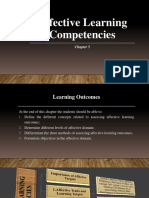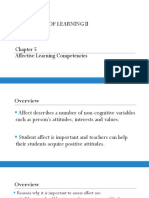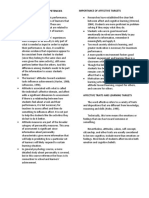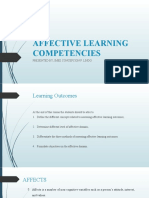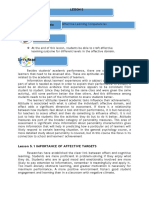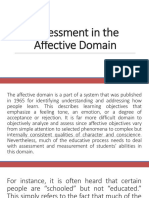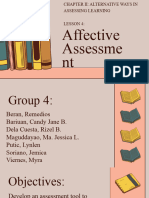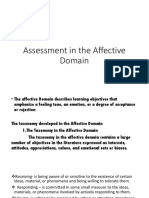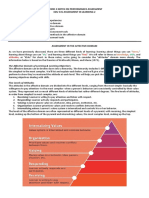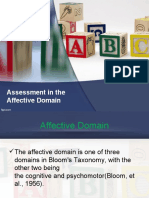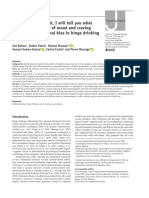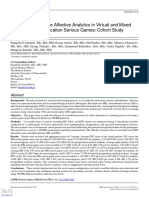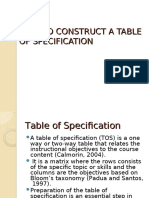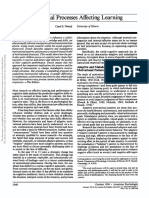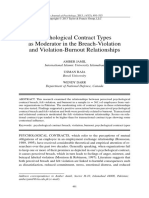0% found this document useful (0 votes)
13 views8 pagesChapter 05
Chapter 5 of AIL 2 discusses affective learning competencies, emphasizing the importance of affective targets such as attitudes, values, motivation, self-concept, social relationships, and classroom environment in enhancing student learning. It highlights the connection between affective traits and cognitive learning, asserting that positive emotions and a supportive classroom climate significantly influence student engagement and success. The chapter also outlines the affective domain of educational objectives, detailing levels from receiving stimuli to internalizing values.
Uploaded by
Ryan Jeffrey Quinto FabilaneCopyright
© © All Rights Reserved
We take content rights seriously. If you suspect this is your content, claim it here.
Available Formats
Download as PDF, TXT or read online on Scribd
0% found this document useful (0 votes)
13 views8 pagesChapter 05
Chapter 5 of AIL 2 discusses affective learning competencies, emphasizing the importance of affective targets such as attitudes, values, motivation, self-concept, social relationships, and classroom environment in enhancing student learning. It highlights the connection between affective traits and cognitive learning, asserting that positive emotions and a supportive classroom climate significantly influence student engagement and success. The chapter also outlines the affective domain of educational objectives, detailing levels from receiving stimuli to internalizing values.
Uploaded by
Ryan Jeffrey Quinto FabilaneCopyright
© © All Rights Reserved
We take content rights seriously. If you suspect this is your content, claim it here.
Available Formats
Download as PDF, TXT or read online on Scribd
/ 8



